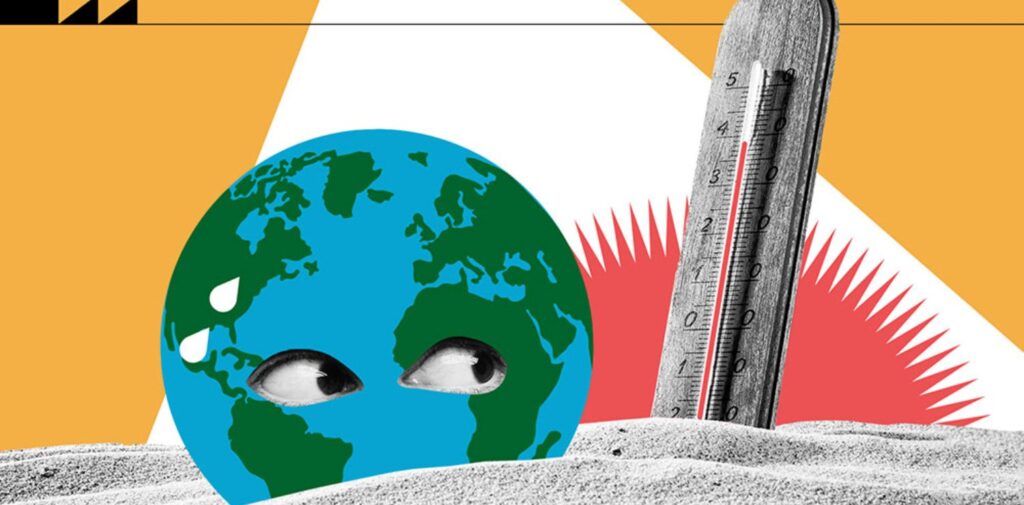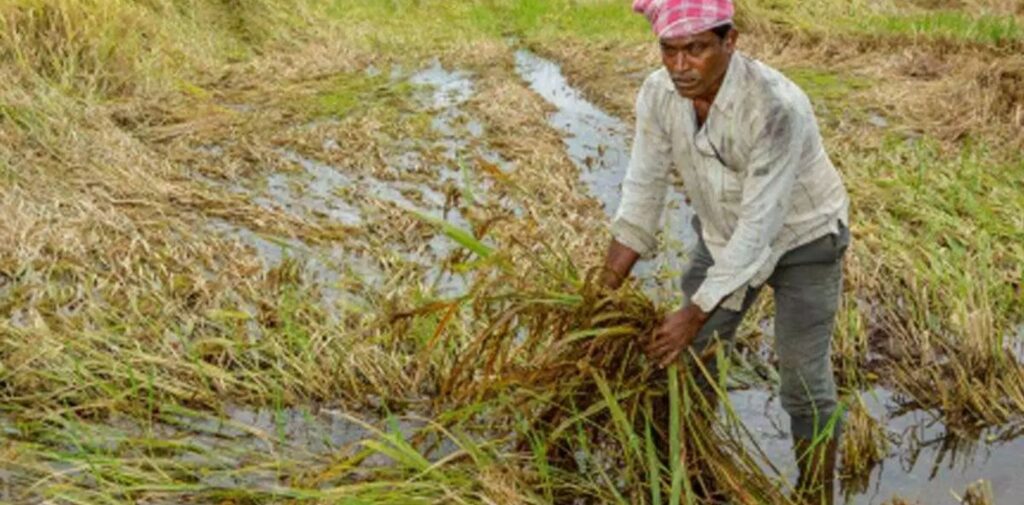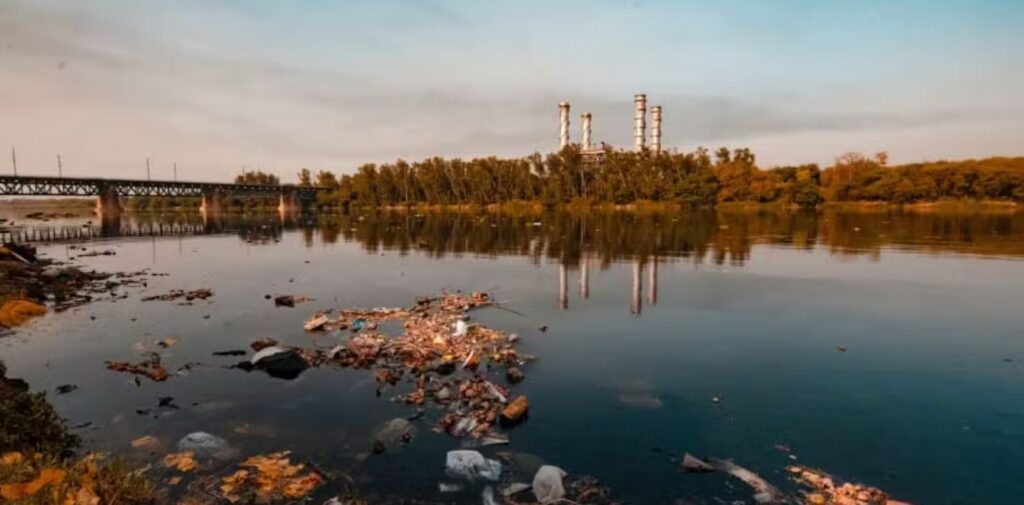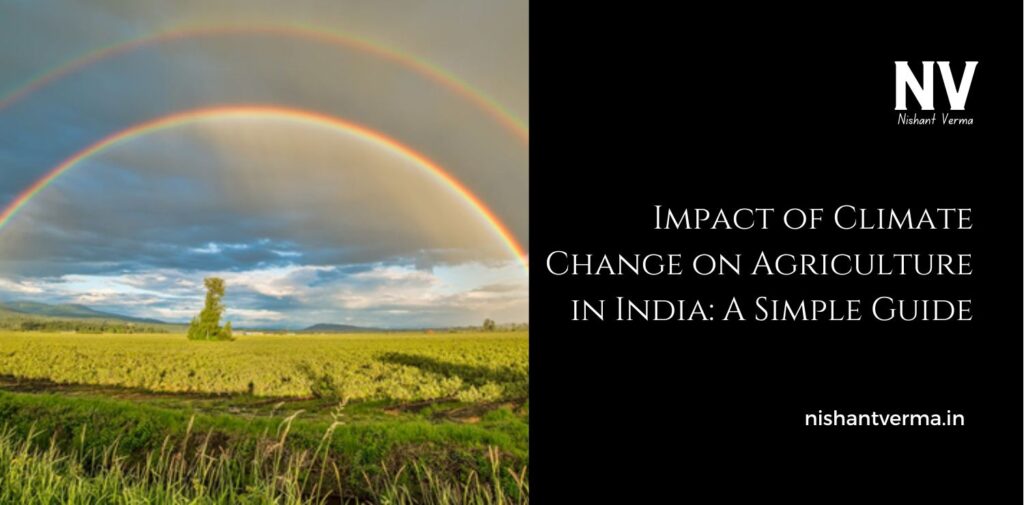Agriculture is the backbone of India. It provides food, employment, and income to millions of people. But in recent years, something important is happening that is affecting farming in India – climate change. Climate change refers to the long-term changes in the weather, including rising temperatures, changes in rainfall, and more extreme weather events like floods, droughts, and storms. These changes are having a big impact on farming in India. In this article, we will explore how climate change is affecting Indian agriculture and why it matters.
What is Climate Change?
Before we talk about its impact on farming, let’s first understand what climate change means. Climate change refers to the long-term changes in temperature, rainfall, and weather patterns over several years or decades. In India, this means that temperatures are rising, the rainy season is becoming unpredictable, and extreme weather events like floods and droughts are happening more often.

How Does Climate Change Affect Farming in India?
1. Changes in Temperature:
India’s farmers rely on specific weather conditions to grow their crops. For example, crops like wheat and rice need certain temperatures to grow well. But with the rise in temperatures, these crops may not grow as they used to. High temperatures can harm the crops and reduce the amount of food produced. Some crops may stop growing in certain regions altogether.
2. Changes in Rainfall:
India’s farming is heavily dependent on the monsoon, which is the seasonal rain that falls every year. But with climate change, the monsoon is becoming unpredictable. Some years, there may be too little rain (droughts), and in other years, there might be too much rain (floods). This makes it harder for farmers to know when to plant and harvest their crops.
When there is not enough rain, crops suffer from water shortage. On the other hand, too much rain can cause floods, damaging crops and washing away the soil. This irregular rainfall affects crops like rice, wheat, sugarcane, and pulses.
3. Increased Extreme Weather Events:
Along with changes in temperature and rainfall, extreme weather events like floods, cyclones, and droughts are becoming more frequent and severe. These events can completely destroy crops, ruin farm equipment, and damage farmland. For example, when a cyclone hits, it can uproot trees and crops, flood fields, and disrupt the transportation of goods.
Similarly, long periods of droughts can dry up rivers, lakes, and reservoirs that farmers rely on for irrigation. This can lead to crop failure, food shortages, and loss of income for farmers.
4. Soil Health Problems:
Soil is where plants get their nutrients and water. But climate change is also affecting the soil. In some areas, heavy rainfall is washing away the topsoil, making the land less fertile. This is called soil erosion. Without healthy soil, crops cannot grow properly, and the productivity of farms goes down. Moreover, the overuse of chemical fertilizers to try and boost crops can harm the soil in the long run.
5. Impact on Small Farmers:
The farmers who are most affected by climate change are the small farmers. These farmers often do not have the resources to protect their crops from extreme weather. They may not have enough money to buy irrigation systems or new seeds that can survive harsh conditions. This makes it difficult for them to survive when their crops fail, leading to poverty and hunger.

Which Crops are Affected the Most?
Different crops are affected by climate change in different ways. For example:
- Rice: Rice is one of the most important crops in India. But rice requires a lot of water. With the increase in temperature and less rainfall in some regions, rice production is suffering. In some places, the changing weather means that rice cannot grow as it used to.
- Wheat: Wheat is another major crop in India. However, wheat is very sensitive to heat. If the temperature rises too much during the growing season, the wheat plants will not produce as much grain.
- Sugarcane: Sugarcane needs warm temperatures, but extreme heat or droughts can damage the crop. In regions like Maharashtra and Uttar Pradesh, where sugarcane is grown, climate change is reducing yields.
- Cotton: Cotton farming is also facing difficulties due to rising temperatures. Cotton is a water-intensive crop, and in dry areas where water is scarce, the plants may not grow well.
- Pulses and Vegetables: Pulses and vegetables, which are grown in many parts of India, also face the challenge of changing weather patterns. These crops rely on specific rainfall patterns, and when the weather is unpredictable, it becomes hard to plan planting and harvesting.
How Do Farmers Cope with Climate Change?
Farmers in India are facing many challenges because of climate change, but they are also finding ways to cope. Some of the ways they are adjusting include:
1. Switching to Drought-Resistant Crops:
In regions where there is less rainfall, farmers are choosing crops that require less water. These include crops like millets, which are more drought-resistant. By growing such crops, farmers can protect themselves from water scarcity.
2. Changing Planting Times:
Farmers are learning to plant crops at different times of the year to avoid extreme weather. For example, they may plant earlier in the season if they expect a dry period or wait for better rainfall conditions.
3. Using Water-Saving Technology:
Some farmers are using drip irrigation and sprinklers to save water and ensure that their crops get enough moisture. These methods help to reduce water wastage, especially in areas where water is scarce.
4. Soil Conservation Practices:
Farmers are adopting soil conservation methods like mulching, crop rotation, and planting trees along the edges of fields. These practices help to protect the soil from erosion, keep it fertile, and conserve moisture.
5. Government Support and Training:
The Indian government has programs that support farmers in dealing with climate change. These include providing training on new farming techniques, offering subsidies for water-saving equipment, and providing financial assistance in times of disaster.

Why is Climate Change a Big Problem for India?
Climate change is a serious problem for India’s farmers because it affects their ability to grow food. When crops fail due to unpredictable weather, farmers lose their income, and food prices can rise. This can lead to hunger and poverty, especially in rural areas.
Furthermore, India has a large population to feed, and any decrease in crop production can lead to food shortages. Climate change also puts pressure on the country’s water resources, making it harder for farmers to get enough water to irrigate their crops.
Conclusion: The Need for Action
Climate change is a major threat to agriculture in India, but it is not too late to take action. By adopting new farming techniques, using water efficiently, and growing more climate-resilient crops, farmers can reduce the impact of climate change on their lives and livelihoods.
It is also important for the government, scientists, and communities to work together to fight climate change. This includes reducing pollution, conserving water, and protecting natural resources. By taking these steps, we can help ensure a more stable and sustainable future for Indian agriculture and farmers.
In the end, the challenge posed by climate change is not just about science and technology. It is about the future of food, the livelihood of millions of farmers, and the well-being of every person who relies on farming for their daily food. By working together, we can make a difference and protect the future of agriculture in India.




